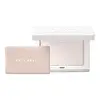Fenty Beauty Invisimatte Instant Setting + Blotting Powder Versus KIKO Milano Universal Veil Finishing Powder
What's inside
What's inside
 Key Ingredients
Key Ingredients

 Benefits
Benefits

 Concerns
Concerns

 Ingredients Side-by-side
Ingredients Side-by-side

Synthetic Fluorphlogopite
CI 77220
Cosmetic ColorantMagnesium Myristate
Hdi/Trimethylol Hexyllactone Crosspolymer
Octyldodecyl Stearoyl Stearate
EmollientPolymethylsilsesquioxane
Squalane
EmollientMica
Cosmetic ColorantCoconut Acid
Cleansing1,2-Hexanediol
Skin ConditioningCaprylyl Glycol
EmollientSilica
AbrasiveSalvia Hispanica Seed Extract
EmollientLeuconostoc/Radish Root Ferment Filtrate
AntimicrobialPhenoxyethanol
PreservativeSodium Hyaluronate
HumectantCI 77742
Cosmetic ColorantCI 77492
Cosmetic ColorantSynthetic Fluorphlogopite, CI 77220, Magnesium Myristate, Hdi/Trimethylol Hexyllactone Crosspolymer, Octyldodecyl Stearoyl Stearate, Polymethylsilsesquioxane, Squalane, Mica, Coconut Acid, 1,2-Hexanediol, Caprylyl Glycol, Silica, Salvia Hispanica Seed Extract, Leuconostoc/Radish Root Ferment Filtrate, Phenoxyethanol, Sodium Hyaluronate, CI 77742, CI 77492
Water
Skin ConditioningPentylene Glycol
Skin ConditioningGlycerin
HumectantC12-15 Alkyl Benzoate
AntimicrobialDicaprylyl Ether
EmollientCera Alba
EmollientPolyglyceryl-3 Diisostearate
EmulsifyingPhenoxyethanol
PreservativeSynthetic Fluorphlogopite
Polyglyceryl-2 Dipolyhydroxystearate
Skin ConditioningHydrogenated Castor Oil
EmollientCaprylic/Capric Triglyceride
MaskingOryza Sativa Starch
AbsorbentCarbomer
Emulsion StabilisingCaprylyl Glycol
EmollientParfum
MaskingSodium Hydroxide
BufferingEthylhexylglycerin
Skin ConditioningHexylene Glycol
EmulsifyingTheobroma Cacao Seed Butter
EmollientHydroxypropyl Guar
Emulsion StabilisingPEG/PPG-20/6 Dimethicone
EmulsifyingAmmonium Acryloyldimethyltaurate/Beheneth-25 Methacrylate Crosspolymer
Emulsion StabilisingSodium Hyaluronate
HumectantDisodium EDTA
Tin Oxide
AbrasiveAlthaea Officinalis Root Extract
Skin ConditioningPropylene Glycol
HumectantTocopherol
AntioxidantPotassium Sorbate
PreservativeSodium Benzoate
MaskingAmmonium C6-16 Perfluoroalkylethyl Phosphate
EmulsifyingPentaerythrityl Tetra-Di-T-Butyl Hydroxyhydrocinnamate
AntioxidantTriisopropanolamine
BufferingCI 77891
Cosmetic ColorantCI 77491
Cosmetic ColorantWater, Pentylene Glycol, Glycerin, C12-15 Alkyl Benzoate, Dicaprylyl Ether, Cera Alba, Polyglyceryl-3 Diisostearate, Phenoxyethanol, Synthetic Fluorphlogopite, Polyglyceryl-2 Dipolyhydroxystearate, Hydrogenated Castor Oil, Caprylic/Capric Triglyceride, Oryza Sativa Starch, Carbomer, Caprylyl Glycol, Parfum, Sodium Hydroxide, Ethylhexylglycerin, Hexylene Glycol, Theobroma Cacao Seed Butter, Hydroxypropyl Guar, PEG/PPG-20/6 Dimethicone, Ammonium Acryloyldimethyltaurate/Beheneth-25 Methacrylate Crosspolymer, Sodium Hyaluronate, Disodium EDTA, Tin Oxide, Althaea Officinalis Root Extract, Propylene Glycol, Tocopherol, Potassium Sorbate, Sodium Benzoate, Ammonium C6-16 Perfluoroalkylethyl Phosphate, Pentaerythrityl Tetra-Di-T-Butyl Hydroxyhydrocinnamate, Triisopropanolamine, CI 77891, CI 77491
 Reviews
Reviews

Ingredients Explained
These ingredients are found in both products.
Ingredients higher up in an ingredient list are typically present in a larger amount.
Caprylyl Glycol is a humectant and emollient, meaning it attracts and preserves moisture.
It is a common ingredient in many products, especially those designed to hydrate skin. The primary benefits are retaining moisture, skin softening, and promoting a healthy skin barrier.
Though Caprylyl Glycol is an alcohol derived from fatty acids, it is not the kind that can dry out skin.
This ingredient is also used as a preservative to extend the life of products. It has slight antimicrobial properties.
Learn more about Caprylyl GlycolPhenoxyethanol is a preservative that has germicide, antimicrobial, and aromatic properties. Studies show that phenoxyethanol can prevent microbial growth. By itself, it has a scent that is similar to that of a rose.
It's often used in formulations along with Caprylyl Glycol to preserve the shelf life of products.
Sodium Hyaluronate is hyaluronic acid's salt form. It is commonly derived from the sodium salt of hyaluronic acid.
Like hyaluronic acid, it is great at holding water and acts as a humectant. This makes it a great skin hydrating ingredient.
Sodium Hyaluronate is naturally occurring in our bodies and is mostly found in eye fluid and joints.
These are some other common types of Hyaluronic Acid:
Learn more about Sodium HyaluronateSynthetic Fluorphlogopite is the synthethic version of mica. It consists of fluorine, aluminum and silicate.
Synthetic Fluorphlogopite is used to add volume to products.
It is considered non-irritating on the skin.
Learn more about Synthetic Fluorphlogopite